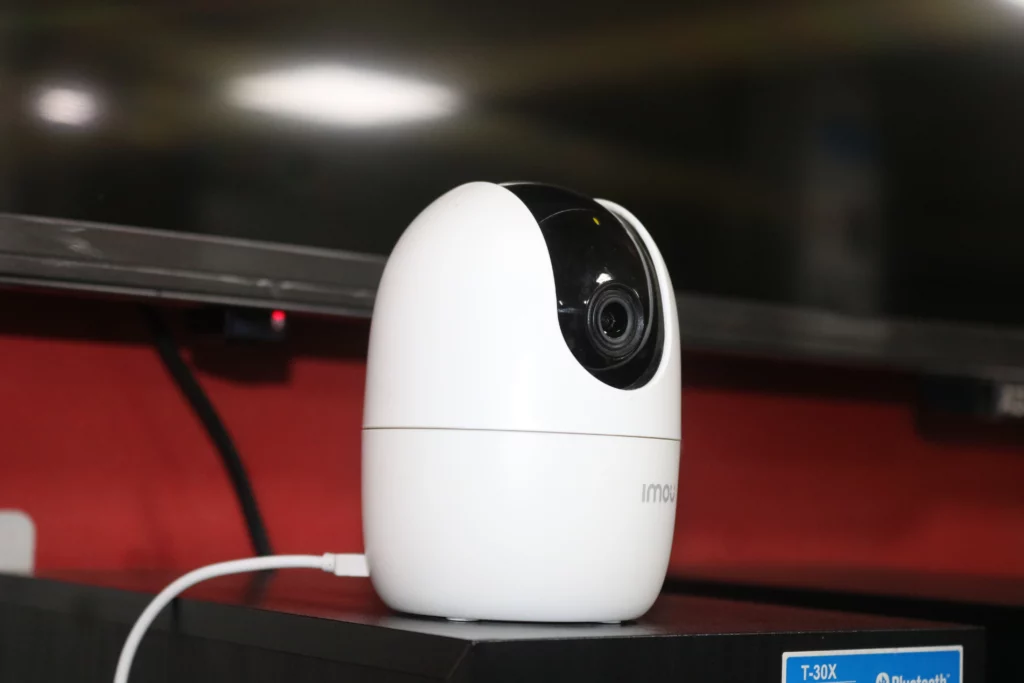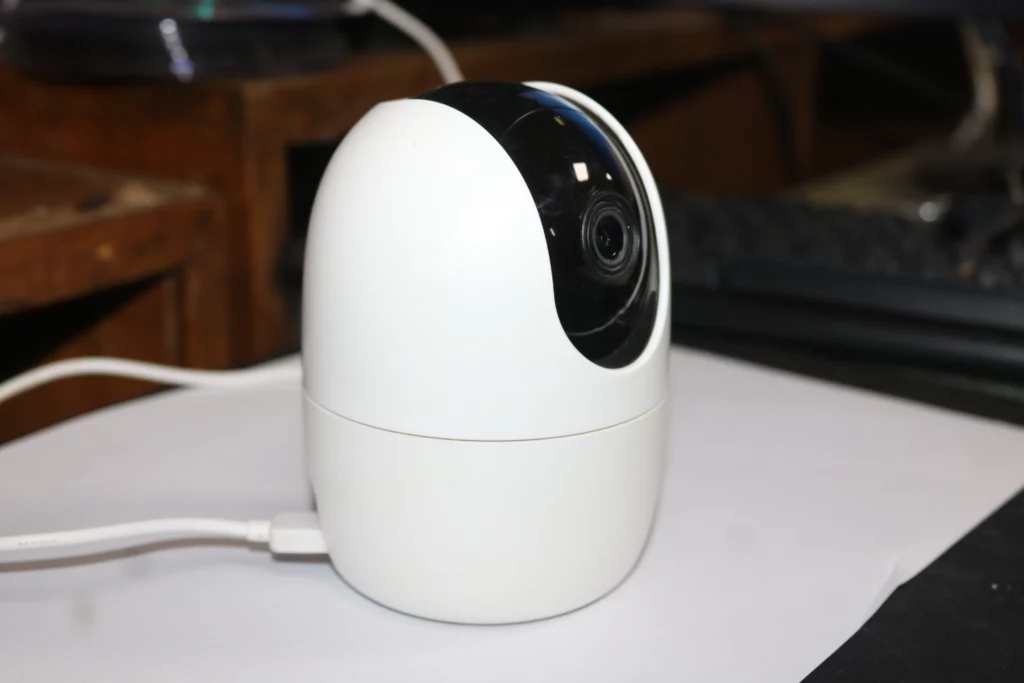As an Amazon Associate, I can earn from qualifying purchases. Learn more.
When you invest in a surveillance system, the idea is to keep an eye on what matters, when it matters most. This means you must make sure the device has stable power all the time. But now begs the question, how do wireless security cameras get power constantly if you wanted to mount them farther away from the house?
The type of CCTV system is currently the most common in homes and small businesses, especially for affordability, DIY installation, plus ease of use. Many options also have a compact design that is perfect for discreet monitoring. You can hide the security camera in plain sight using everyday objects like birdhouses, driveway lamps, fake flower pots, et cetera.
All that said, though, you should know…
Wireless Security Cameras Necessarily Doesn’t Mean Wire-Free
When distinguishing wired vs wireless security cameras, we concluded the latter doesn’t exactly mean wire-free, although that’s how many people assume.
Basically, a wireless camera is a kind that usually transmits data (video and audio) wirelessly- without relying on cables. It can be transmitting the data to your viewing device, recording unit, cloud storage, or professional monitoring service.
Well, the data transfer process here works both ways. Or in other words, the wireless security camera also receives commands from the viewing device, recording unit, or cloud wirelessly. The incoming commands include operations like adjusting the video recording mode, zoom, night vision, and pan/ tilt of the PTZ camera.

Some wireless security cameras, such as Ring, can communicate with your door/ window motion sensors to start recording when triggered. The communication here is also wireless, with no cabling involved. And this means your system is less vulnerable to sabotage than the wired cameras.
Nonetheless, dedicated burglars who want a peek into your jewelry box will still find a way to disable your wireless cameras. Some will go for wireless signal jammers and others will look for a way to turn off the system completely.
One way to turn off a security camera is by using the built-in power/ reset button. And if this button is hidden/missing, the intruder will look for a way to cut the power flow to the device.
How Do Wireless Security Cameras Get Power
Similar to any other system, a wireless security camera will require constant power to run and send footage of your property. The type of power supported varies with the wattage used by the individual camera, which in turn depends on the features present.
Long story short, the four different ways how wireless security cameras get power include:
- Battery Power
The first way wireless security cameras get power to run is from their built-in batteries. We’ve opted to start with the option as it’s what comes to the mind of many users when they see the term.
A battery-powered security camera is what we often call a wire-free setup. It’s handy in situations where you want to keep an eye on areas inaccessible to wired power or monitor discreetly.
The batteries can be the disposable kind in the likes of Blink Outdoor or trail cameras that send pictures to your phone. But many of the brands in the market utilize a rechargeable battery that you can reuse for a couple of years.
Sadly, however, the charge on the batteries will deplete quicker with the more features you use. It’s the reason wireless systems with this type of power only support activity/ alert recording without the 24/7 continuous mode.
But even with just alert recording, how long batteries last in your wireless security cameras will depend on the brand. Ring has the longest battery life in the wireless video doorbell category, while Blink leads in the camera line.
- Wired Power
The second way how wireless security cameras get power to run is by plugging into the wall outlet. It’s most obvious with indoor cameras, as we already saw in the Blink vs Eufy review. But various outdoor security cameras also get their power this way, especially if they have a high consumption rate.
A perfect example is the Eufy Floodlight Cam 2 Pro, which takes a lot of power to light up its 3000-lumen white LEDs. The company recommends you plug into the wall outlet only when setting up. Then when mounting at the permanent location you hardwire to the main power supply, where the energy source is more stable.

A continuous recording security camera also tends to use more power in 24/7 mode than when saving short activity clips. And this is why a battery-powered Arlo security camera requires plugging into the electrical outlet for continuous video recording (CVR) mode.
However, as you install your wired power wireless security camera, don’t leave them too exposed. A dedicated burglar may come ready with tools to cut the power wires and render them non-functional. So, make sure you hide the wire of the camera however possible or mount it on higher ground.
It’s also worth mentioning power outages may affect the performance of your wired power camera. But we do have cameras like the recently-released NestCam with a backup battery that lasts a few hours when the power goes out.
- Solar Power
Overall, a solar-powered wireless security camera is the best option to keep an eye on areas incapable of wiring. The system, YES, still falls under the battery-powered category. But the solar charger helps ensure the batteries have a constant power supply and won’t need regular charging.
Meanwhile, the solar panels will require direct access to sunlight to deliver that constant power. The placement shouldn’t be a concern if your camera has the solar panel separately (as an add-on). You just have to make sure the cable for the solar charger is long enough to reach where the camera is.
However, we do have the likes of EufyCam 3 with a built-in solar panel. And this can get tricky in finding the best placement, as you must consider both systems: the camera and the solar.
Similar to the other power options, solar charging has its drawbacks as well. The first con is the fact that the system will have trouble drawing power when there’s no sun- such as during the winter season.
Second, solar power is still not stable enough for the security camera to support continuous video recording. Nearly all the brands in the market only support motion/ alert recording mode.
Thirdly, keeping a rechargeable system connected to the charger all the time tends to degrade the battery sooner than expected. And this applies when using the charger from your AC outlet or solar panel.
- PoE Power
Last but not least, we have wireless security cameras that work with power over Ethernet (PoE). A perfect example is the Amcrest ProHD WiFi Indoor camera.
When covering BNC vs PoE cameras, we saw the Ethernet cable carries both power and data (video and audio). But when the security camera has both wireless and PoE protocol, you still can only establish a single connection to the router.
So, you’ll connect the camera to the router or computer via the PoE cable for power. Then configure it via a WiFi connection for use.
One thing to note is that a PoE setup to the router is usually better in clarity than a wireless connection. It also transmits data relatively farther- up to 100 meters with a single cable or 1000+ meters if connected with a bridge of switches.
You may also like: Do Movie Theaters Have Security Cameras?
Final Thoughts:
As you can see, the way how wireless security cameras get power varies with the product at hand. The four methods are what we currently have in the field, with the battery being a favorite of most.
A battery-operated security camera, whether rechargeable or not, is still more convenient than wired power options. It’s very flexible on installation as you can mount it anywhere, including on trees and fences.
Sadly, you do lose important features like continuous video recording with a battery camera. Some brands also don’t have 24/7 live-streaming, which is handy in situations like when you use the camera in baby nurseries.
Also, a battery camera must be recharged, which may require climbing up the ladder now and then. But again, you can always hook up a solar charger to provide a constant power supply.